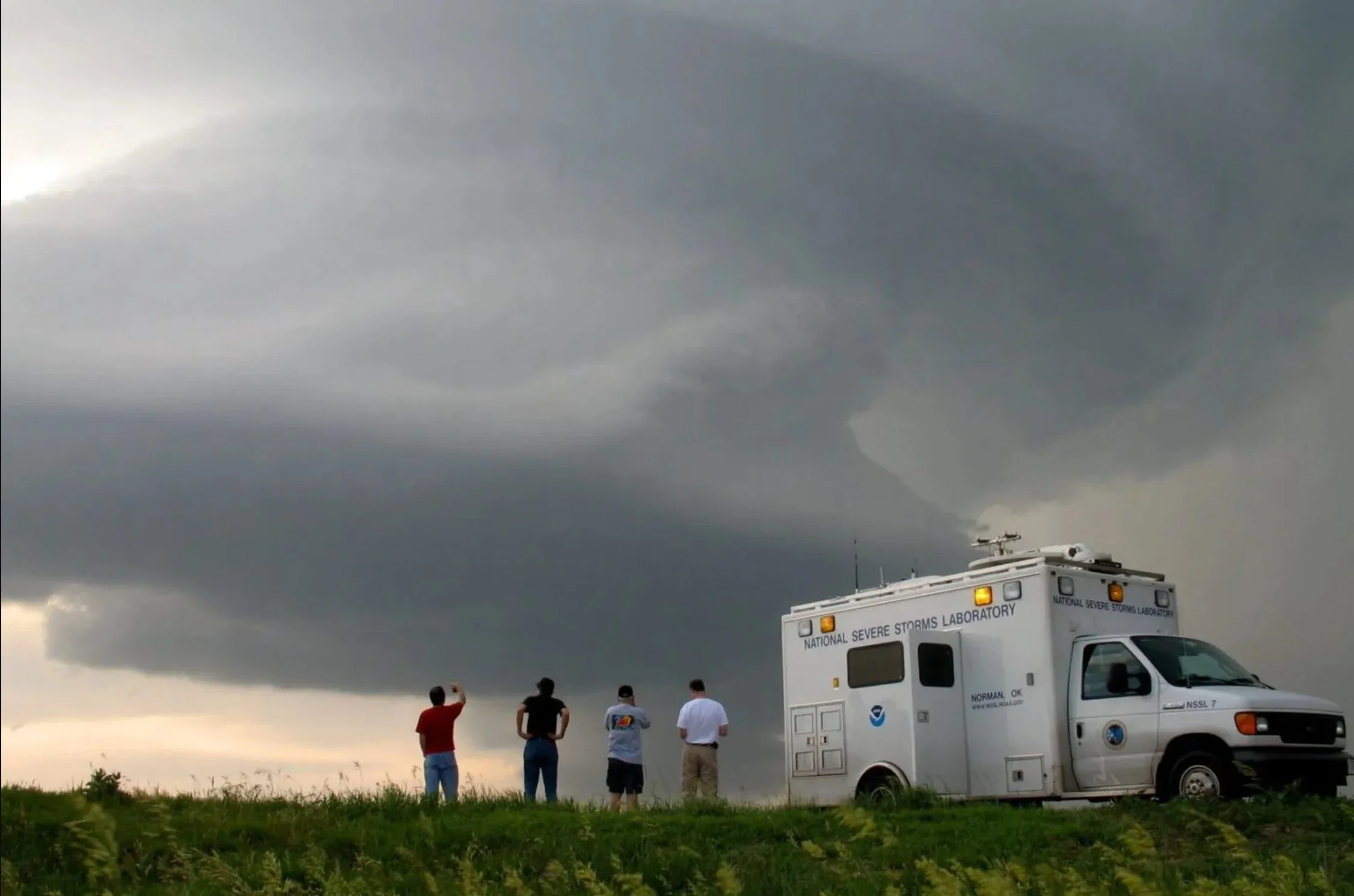For years, a powerful ‘Big Ag’ trade group served up information on activists to the FBI. Records reveal a decade-long effort to see the animal rights movement labeled a “bioterrorism” threat.
Hundreds of emails and internal documents reviewed by WIRED reveal top lobbyists and representatives of America’s agricultural industry led a persistent and often covert campaign to surveil, discredit, and suppress animal rights organizations for nearly a decade, while relying on corporate spies to infiltrate meetings and functionally serve as an informant for the FBI.
The documents, mostly obtained through public records requests by the nonprofit Property of the People, detail a secretive and long-running collaboration between the FBI’s Weapons of Mass Destruction Directorate (WMDD)—whose scope today includes Palestinian rights activists and the recent wave of arson targeting Teslas—and the Animal Agriculture Alliance (AAA), a nonprofit trade group representing the interests of US farmers, ranchers, veterinarians, and others across America’s food supply chain.
Since at least 2018, documents show, the AAA has been supplying federal agents with intelligence on the activities of animal rights groups such as Direct Action Everywhere (DxE), with records of emails and meetings reflecting the industry’s broader mission to convince authorities that activists are the preeminent “bioterrorism” threat to the United States. Spies working for the AAA during its collaboration with the FBI went undercover at activism meetings, obtaining photographs, audio recordings, and other strategic material. The group’s ties with law enforcement were leveraged to help shield industry actors from public scrutiny, to press for investigations into its most powerful critics, and to reframe the purpose and efforts of animal rights protesters as a singular national security threat.
The records further show that state authorities have cited protests as a reason to conceal information about disease outbreaks at factory farms from the public.
Zoe Rosenberg, a UC Berkeley student and animal cruelty investigator at DxE, says she’s hardly surprised that powerful private-sector groups are working to surveil the organization, but she finds their work with the police paradoxical. “If anyone should have the ear of law enforcement, it’s animal cruelty investigators exposing rampant violations of the law leading to real animals suffering and dying horrific deaths,” she tells WIRED.
Profiled by WIRED in 2019, DxE is a grassroots animal rights organization dedicated to nonviolent direct actions, including covert operations that often involve rescuing animals and documenting practices at factory farms that the group considers inhumane.
Rosenberg, 22, is facing charges in California for removing four chickens from a slaughterhouse in Sonoma County in 2023. In addition to minor charges such as trespassing, she was also hit with a felony count of conspiracy to commit those misdemeanors—a discretionary charge that Sonoma County’s prosecutor justified by portraying Rosenberg as a “biosecurity risk” in light of avian flu.
According to Rosenberg, DxE relies on biosecurity protocols that go “above and beyond” industry standards, including quarantining its investigators from birds for a full week before and after entering farms. “All of our investigators before entering a facility shower with hot water and soap and put on freshly washed clothes that have been washed thoroughly and dried on high heat to kill viruses and bacteria,” she says. “Everything is sanitized and then sanitized again upon leaving the facility.”
Rosenberg does not deny removing the chickens, which she named Poppy, Aster, Ivy, and Azalea. “Generally, if we feel an animal is going to die from neglect or maltreatment if we don’t remove them from the facility, then we feel that it is justified and necessary to step in to save their life,” she says. Her attorney, Chris Carraway, says that DxE tried reporting allegations of health violations at the facility to “the point of futility.” Rosenberg says reporting alleged violations often leads to getting bounced between offices; a “never-ending loop of no one agency wanting to take responsibility and enforce animal welfare laws.”
The birds Rosenberg removed, she says, were all smaller and weaker than their flockmates, showing signs of what she believed to be infection and dehydration, along with open wounds and other visible injuries. Under veterinary care, Rosenberg says, Poppy was diagnosed with a respiratory infection, while Aster’s feet were found to be “full of pus.” Each of the birds had contracted coccidiosis, she says, referring to a parasite that causes diarrhea, inflammation, and bleeding.
Tinker Tailor Corporate Spy
To gather intelligence on DxE, records show, the Animal Agriculture Alliance has surveilled the group for years. Confidential documents obtained separately by WIRED reveal undercover operators for the AAA embedded within the animal rights group and fed the trade organization daily reports about protests and meetings, as well as photographs, audio recordings, and other documentation.
During a November 2018 meeting, AAA board members discussed attending DxE events to develop “protective information,” adding they were already in contact with a “security company” that had previously attended DxE’s training. At a manager’s meeting the following April, the group disclosed that it wanted to “hire someone” to attend a DxE conference in Berkeley, California. Minutes from that meeting show the “total price would be about $4,500.” A confidential report, authored several months later by an undercover on assignment from private intelligence firm Afimac Global, reveals the results of the operation. (Another confidential report—not attributed to a specific intelligence firm—shows the AAA would again infiltrate a DxE conference in 2021. The report identifies members of DxE and other attendees, including Rosenberg, and describes interviews with activists and observations about their protest activities.)
Afimac did not respond to a request for comment.
At a regulatory conference in early 2018, the AAA had delivered a talk on “Bioterrorism and activist groups.” Internal AAA documents show that, within a few months, the FBI contacted AAA with a request. “They reached out to us a few weeks ago and asked for records of activist incidents on farms,” say notes from a meeting that May. At the same meeting, members discussed their difficulty getting prosecutors to charge activists with crimes, with one industry representative saying the issue was their lack of legal standing.
The rep suggested calling on law enforcement to deploy “terrorism” charges instead—as one national pork producer had reportedly considered. The AAA had already “been in contact with the FBI about this situation,” the notes claim.
In an email to WIRED, AAA spokesperson Emily Ellis denied the organization has a formal relationship with the FBI. “In the course of our work to support a secure food system, we have occasionally communicated with authorities to flag concerns where there is a potential risk to people, animals, or critical infrastructure.” The nonprofit declined to answer questions about its hiring of undercovers and did not respond when asked whether it had any specific evidence showing activists have caused outbreaks.
“The Alliance cannot speak to how law enforcement officials choose to communicate or act on information,” Ellis wrote. “We do not direct the actions of any government agency, and we categorically reject the suggestion that the Alliance instructs or influences the FBI or any such organization.”
Records show that in the spring of 2019, the AAA moved to establish a firmer connection with the FBI. In an email to the bureau that May, the group’s then-president and CEO, Kay Johnson Smith, noted having met with Stephen Goldsmith, a veterinarian at the FBI’s WMDD, a month earlier at a conference aimed at strengthening ties between the government and agriculture sector. The email goes on to remind Goldsmith of her presentation at the event concerning DxE; an “extremist group,” she wrote, “that has executed several mass protests on farms, in retail stores and in restaurants.” Smith then called on the WMDD to help the AAA share information about DxE “with law enforcement officials nationwide,” claiming the group is planning an “extremist campaign.”
Smith passed along an alert about an upcoming DxE protest, a march from a local police station to a nearby grocery store, asking if the FBI would connect the group “with law enforcement officials nationwide.” Goldsmith forwarded the alert to another FBI official who forwarded it along to several more, before it eventually reached a counterterrorism center in Washington and a federal investigator with the US Department of Agriculture (USDA).
The WMDD issued an intelligence memo roughly three months later titled “Animal Rights Extremists Likely Increase the Spread of Virulent Newcastle Disease [vND] in California,” citing with “high confidence” claims that violent extremists were “likely” to “spread vND”—a highly contagious and often fatal disease that affects birds—“in the near term” by neglecting biosafety procedures. The FBI highlighted two instances in which it claimed there was “no evidence” of activists following proper protocols.”
Analysts at the Northern California Regional Intelligence Center (NCRIC), a multi-agency hub that supports law enforcement, soon threw cold water on the FBI’s claims. “Animal rights activists are probably not responsible for any of the identified vND incidents” in the state, the NCRIC said less than four months later, citing federal scientific research, records first obtained by the transparency group Distributed Denial of Secrets show. The agency further noted that despite law enforcement’s claims that DxE “almost certainly” violated biosecurity protocols, police reports showed activists had taken “biosecurity precautions to prevent contamination or spread of disease.”
If the activists were to engage in criminal activity, the NCRIC decided, the crimes were likely to be “non-violent” and “low level.”
That same fall, Goldsmith’s chemical-biological countermeasure unit within the WMDD quietly circulated a presentation to state law enforcement officials pointing to “unsubstantiated reports” that PETA, the animal rights nonprofit, had played some sort of role in the 2015 avian flu outbreak—allegedly collecting “contaminated carcasses” in an effort to spread the virus. Goldsmith had already previously dismissed a similar claim while working for the same unit four years prior. (A trade publication paraphrased the FBI official in 2015 telling a crowd “there is no evidence of that actually happening.”)
Goldsmith did not respond to a request for comment. The FBI declined to comment about any specific groups but noted it frequently shares information with members of the private sector. “Our goal is to protect our communities from unlawful activity while at the same time upholding the Constitution,” the agency said in an emailed statement. “The FBI focuses on individuals who commit or intend to commit violence and activity that constitutes a federal crime or poses a threat to national security. The FBI can never open an investigation based solely on First Amendment protected activity.”
New Ammunition
By the end of 2019, the Animal Agriculture Alliance was relying heavily on “bioterrorism” claims to justify further calls for law enforcement intervention. To gain the attention of local police in California and the state’s Rural Crimes Task Force, the AAA contacted Michael Payne, an outreach coordinator at the Western Institute for Food Safety and Security at UC Davis. One of its members, they said, had heard from an unidentified trucker who was growing increasingly frustrated with animal rights activists. And the driver’s concerns extended to “bioterrorism.”
The activists were taking photos of the driver’s truck, the AAA said, and “feeding his pigs grapes.”
Payne had previously attended a presentation by the AAA on “dealing with animal rights activists,” according to emails between them. He’d later invited the AAA to collaborate on a range of dairy-farm proposals in California, alongside multiple law enforcement agencies, including the FBI.
Neither Payne nor UC Davis responded to requests for comment. Nor did the California Rural Crime Prevention Task Force. Attempts to reach Payne by phone were unsuccessful.
Months after the FBI circulated its now-disputed assessment of activists spreading the virulent Newcastle disease, Payne issued a memo under the rural taskforce’s letterhead encouraging his “FBI colleagues” to read an article translated and amplified by a Beijing-based podcast host. The article concerns Chinese “swine stir-fry syndicates” purportedly using drones to spread African swine flu in an alleged scheme to manipulate the price of pork.
Payne suggests weaponizing the allegations to achieve specific policy goals here in the US, such as allowing farmers to declare livestock facilities “no fly zones.” “Combined with the assessment from the FBI indicating activist trespass is a real and present biosecurity threat,” he writes, the Chinese pig-gang claims hand the industry “ammunition” to ensure sheriffs do a “proper job” when responding to complaints.
Significantly, the podcast host (whose blog was shared by Payne) openly rejected the pig-gang allegations, drawing attention to the Chinese government’s ownership of the news outlet that originally reported the story, as well as counter-reporting by a “respected” independent outlet.
Payne’s email notes that he forwarded the article to a slew of local sheriffs’ departments, as well as the state’s WMDD office, “which in turn passed it on to FBI HQ ‘for their situational awareness.’”
Information gathered on DxE’s activities by the AAA was widely disseminated to federal, state, and local law enforcement agencies around the US, as well as the Royal Canadian Mounted Police. In a February 2021 email, the group provided the WMDD office information on three events that DxE and other activist groups had planned, including a Zoom class and a vigil at a pork processing plant for Regan Russell, an activist killed in 2020 by a livestock transport truck outside an Ontario slaughterhouse.
Goldsmith circulated the AAA’s tips to several FBI agents, as well as a supervising special inspector in the animal health branch of the California Department of Food and Agriculture (CDFA). Several federal agencies and at least 27 state and local police departments received the email. At least 10 agricultural trade groups and lobbyists were copied.
Big Ag’s Back Channel
Ryan Shapiro, executive director at Property of the People, says the hundreds of records amassed by his organization offer an unprecedented look at how Big Ag lobbyists allegedly vied to conceal incidents of animal cruelty and disease and targeted law enforcement agencies specifically for capture. “This is a shameless assault on civil liberties, human health, and basic decency,” he says.
“There’s an inherent relationship between cruelty and disease on factory farms,” says Shapiro, whose MIT doctoral dissertation explored the intersections of national security and controversies over animals. “When you have that many animals packed in so tightly they can’t stand up, can’t turn around, can’t spread their limbs, and are pressed up against each other in their own filth, in their own sickness, of course disease is going to be rampant.”
The furor over DxE’s activism within the animal agriculture industry reached a fever pitch two months later with the launch of Project Counterglow, an online interactive map of more than 27,500 farms and animal-ag facilities drawn from public regulatory and business records, reporting by individual activists, and artificial intelligence that scanned satellite imagery to reveal previously unknown facilities.
Citing Project Counterglow the following month, the Food Protection and Defense Institute, a university-based consortium working alongside the Department of Homeland Security, disclosed in a memo that the FBI and AAA had jointly “profiled the current risk environment” at an industry-government coordinating event within days of the map’s launch. According to the memo, the FBI was in the process of supplying the AAA with a list of WMDD coordinators with whom members were encouraged to share knowledge about activists.
The FBI would eventually provide the group with a dedicated inbox to inform on DxE and other animal rights groups. In a 2023 email, the alliance reminded members to report “animal rights activity” directly to the FBI using the group’s own “Activist Activity Notification Form” and the email address NF_ARVE_INTAKE@fbi.gov.
The Food Protection and Defense Institute did not respond to a request for comment.
Delays, Denials, and Disease
Preventing animal rights activists from learning about outbreaks has at times taken priority over notifying the public about them.
Emails from 2023 show officials at the USDA and the California Department of Food and Agriculture discussing how best to delay news about a highly pathogenic avian flu detected at two Sonoma County farms; a state official having previously warned that “protesters” were likely to be in the area. The solution, put forth by a USDA official, was to simply not enter the information into the state’s emergency management response system, delaying the alert for at least another three days.
“Much longer than that and it raises too many questions,” they said.
At least a quarter of a million birds were culled around the same time as the emails. And a year later, the CDFA released a report that pointed the finger at the protesters, alleging it was “plausible” they may have spread the virus.
Steve Lyle, a CDFA spokesperson, says the possibility of people showing up to a farm without proper biosecurity training always raises concerns about virus spread. “In any animal disease incident, more movement of people and equipment brings a greater risk of spread,” he says.
A “crisis response plan” crafted by Washington State livestock and agricultural groups, obtained through a public records request, notes that the federal government’s policy is “to assume that any animal disease outbreak or large-scale food contamination incident is an intentional act until proven otherwise.”
When rumors about cattle being poisoned or intentionally infected with a virus began circulating around the Washington State Department of Agriculture (WSDA) and other agencies, the claims were put to rest by the head of an field dairy investigative unit out of Washington State University, whose team had discovered a “serious outbreak” among several herds of yearling cattle.
The investigator noted that while a cattle owner was convinced the outbreak was “sabotage from animal rights activists,” other probable sources were clearly present. The investigator said his team had “spent a lot of time trying to convince [the ranchers] that the disease outbreak most likely had nothing to do with bioterrorism, and is most likely due to husbandry and management issues which we laid out very clearly for them.”
But ranchers, he said, seemed to “prefer to follow conspiracy.” After reading this, a WSDA official told others in the email chain to “keep this information private and not forward [it] on.”
Pressed by a reporter in 2021 as to why the WSDA kept no tally of livestock in the state, officials noted internally that, while the short answer was it’s never been directed to, “privacy is very important to producers, especially with ongoing threats associated with agro-terrorism and activist groups.”
The AAA, meanwhile, has worked for years to keep its communications with the government secret from the public, moving documents subject to public records requests behind a “password protected link” in 2018, records show. That same year, it joined a coalition of food industry groups in filing an amicus brief with the US Supreme Court aimed at limiting public access to corporate records under the Freedom of Information Act (FOIA)—expressing enthusiasm at the time that the court’s conservative majority would back its play. “Animal activist groups routinely use FOIA to obtain confidential information submitted to the government,” a meeting agenda from the time reads.
The case, ultimately decided in the food industry’s favor, redefined the meaning of “confidential” under FOIA to include information that the industry itself decided should be private.
In October 2024, Goldsmith attempted to intercede against a state-level records request by Property of the People, incorrectly informing the Washington State Department of Agriculture that the requester—Shapiro—was a member of a known criminal group.
Records later obtained by Shapiro under the state’s public records act show Goldsmith telling the WSDA that the “timing” of his request was suspicious because it coincided with a recent bird flu outbreak. That outbreak occurred in an “unusual location in the building,” he said, and did not match the virus’s “expected epidemiological pattern.” While stressing that there’d been a report of a simultaneous outbreak at another farm owned by the same company, Goldsmith also cited the AAA in his email as an organization monitoring “animal rights violent extremists.”
“Transparency is not terrorism,” says Shapiro, “and the FBI should not be taking marching orders from industry flacks.”
WSDA officials, while correcting Goldsmith’s allegation that Shapiro is a member of a criminal group, advised the FBI not to mention the infected farm by name, providing Goldsmith and other FBI officials with a code word in case their communications were discovered through a public records request. A WSDA spokesperson tells WIRED that it is customary to do so when a farm is placed under quarantine, “to protect the identity of the operation, consistent with confidentiality provisions.” The FBI was later waived off by the WSDA entirely in an email emphasizing that the two cases Goldsmith thought potentially connected were “completely unrelated.”
“WSDA responded to the inquiry,” a spokesperson tells WIRED, adding that the strains of disease at the two locations were “genetically different” and “did not raise concerns.”
Updated at 2:30 pm ET, June 3, 2025: Added details about the original source of the Northern California Regional Intelligence Center records described in this article.
Read more here





































































